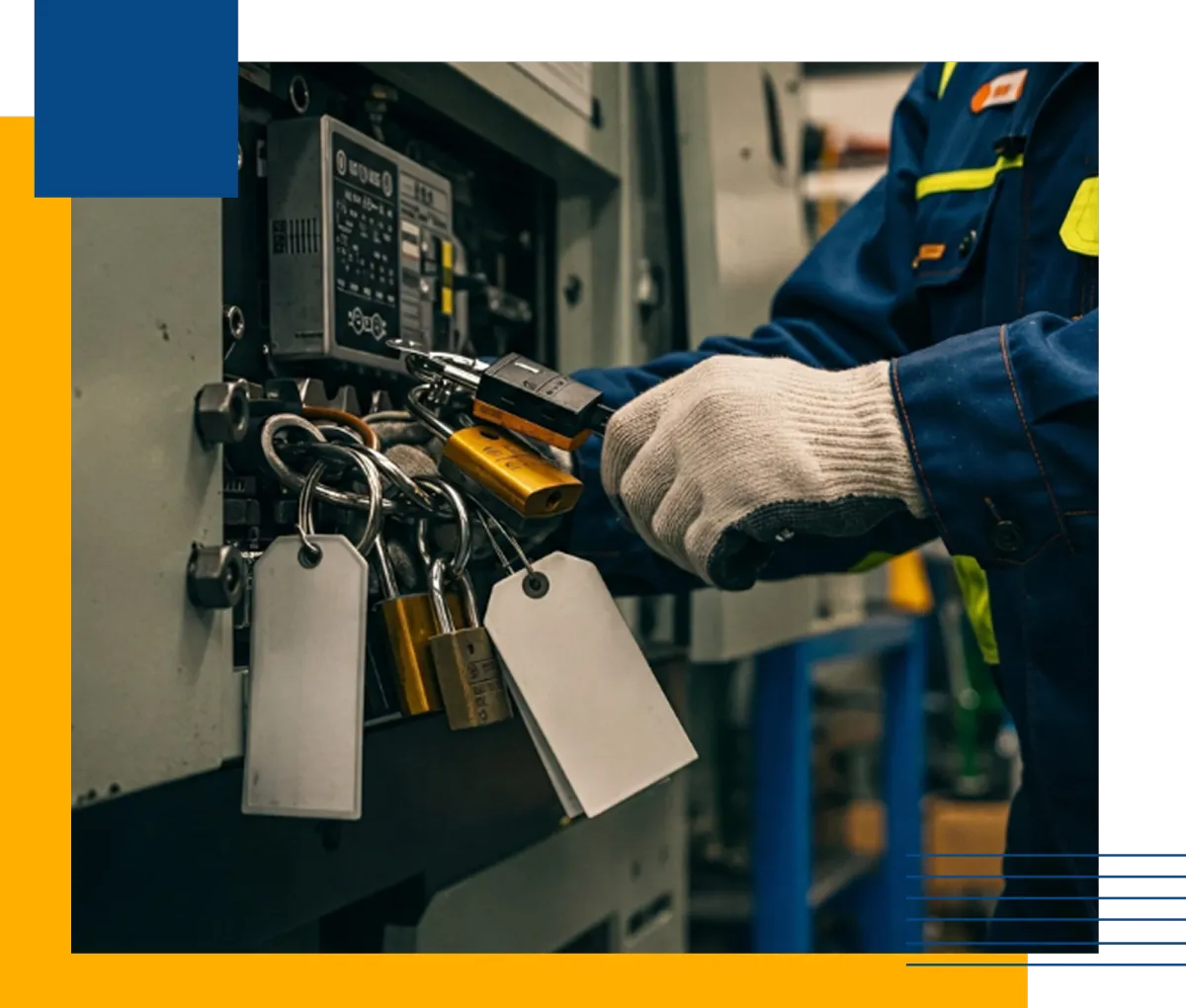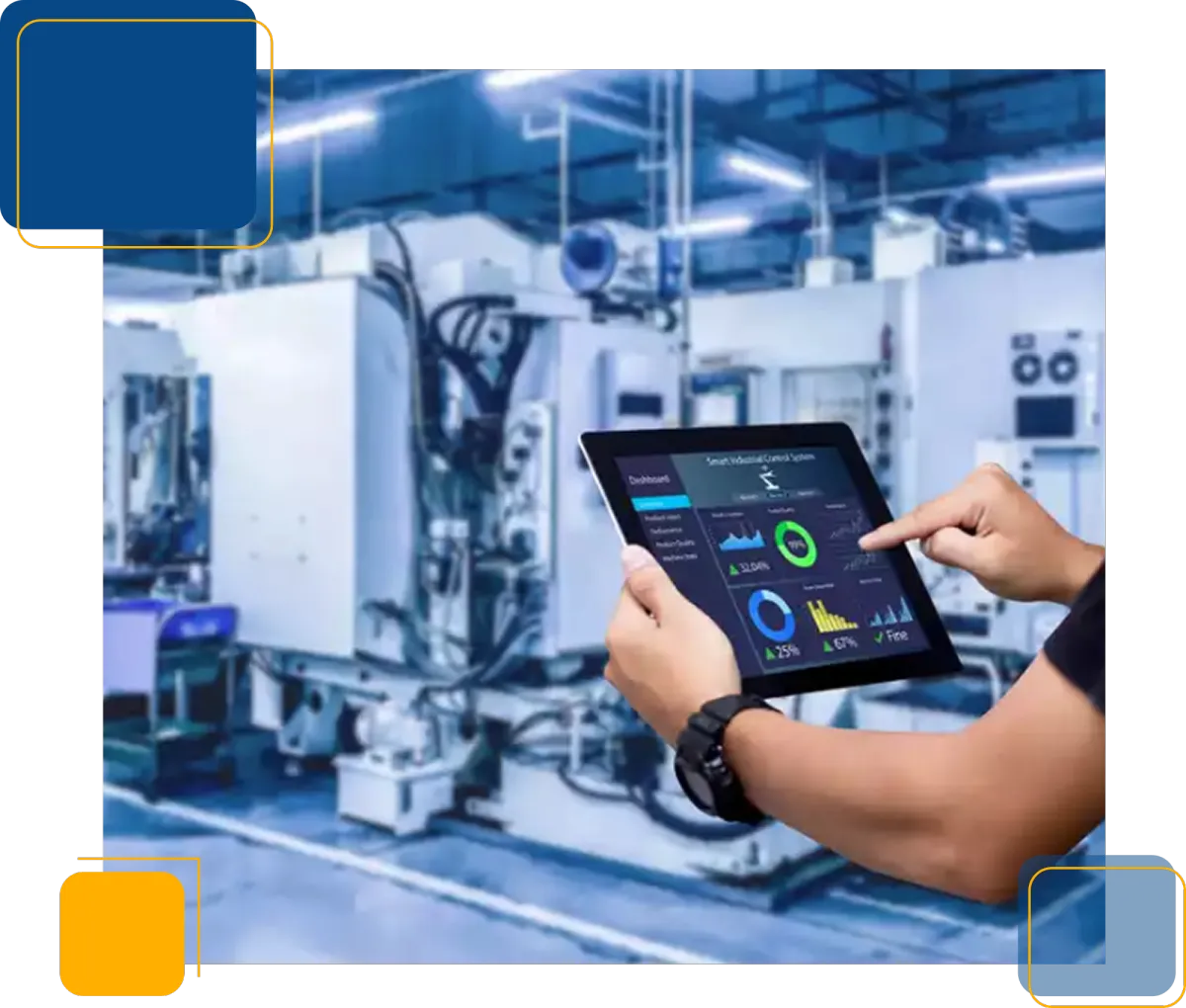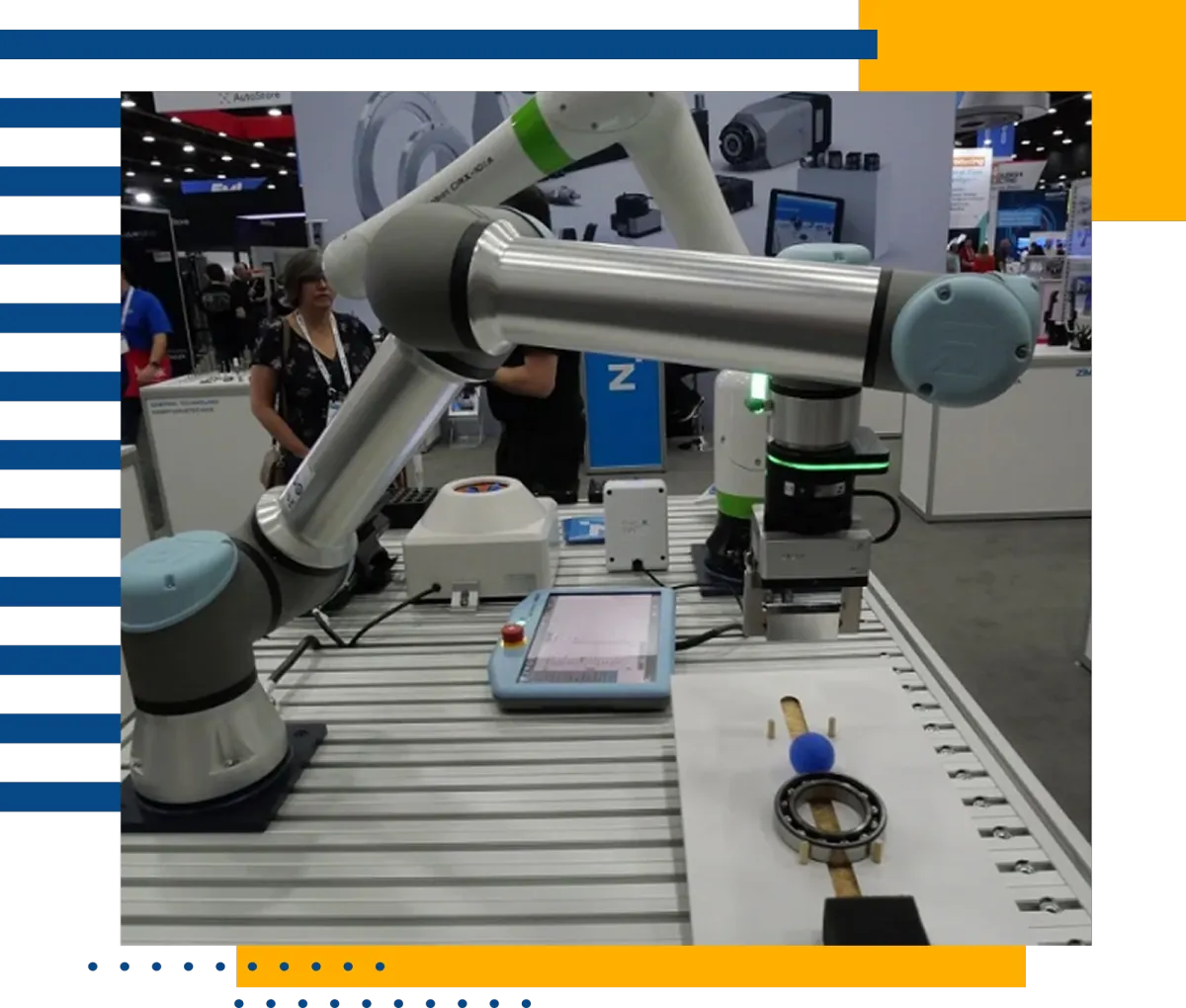

(828) 471-4317
Now Offering Spanish Safety Training!

Now Offering Spanish Safety Training!
Lockout/Tagout Modernization: Controlling Hazardous Energy for Robotics & Automation
Advanced Lockout/Tagouts
Why LOTO Modernization Matters for Automation

Automation reshapes hazardous energy control. Robots, cobots, conveyors, and safety PLCs introduce complex motion, stored energy, and software states that old, purely electrical lockouts don’t fully address. Modern programs combine traditional isolation with engineered safeguards, maintenance modes, and validated procedures that reflect real tasks, tools.
OSHA’s intent to modernize LOTO emphasizes risk assessment, alternative protective measures, and clarity around the minor-servicing exception. For robotics, that means distinguishing production from servicing, establishing safe speed and hold-to-run modes, and documenting when control-reliable safety functions support repetitive tasks with equal or greater protection.
Your program must achieve a verified zero-energy state before servicing that could expose employees. But for defined tasks, engineered modes can control motion while preventing startup. The key is written, task-based procedures, training, supervision, and proof that residual risks are as low as reasonably achievable.

Hazards, Definitions, and When APMs Apply
Alternative protective measures (APMs) use validated safety functions—like safe torque off, safe limited speed, interlocked gates, and enabling devices—to hold energy in a predictable, non-hazardous state for narrowly defined tasks. APMs are not shortcuts; they are engineered modes with equal or better protection than full lockout when the task cannot be done with equipment fully de-energized without creating greater hazard or infeasibility during specific windows.
The minor-servicing exception is often misunderstood. It applies only to routine, repetitive, and integral tasks performed during normal production when effective alternative protection is used. Examples include clearing a simple misfeed using a hold-to-run device at safe speed within a guarded cell. If exposure exists beyond the guarded mode, or tasks require removing safeguards, use full lockout with group control, verification steps documented in the written procedure.
Risk assessment underpins decisions. Define tasks, hazards, and boundaries; map expected positions, speeds, and stored energy; and select protective functions with performance levels to match severity. Validate with try-out tests, documented results, and periodic audits. Train authorized employees to recognize when APMs apply, how to verify safe states, and when to stop and escalate to full lockout. Include contractors and integrators in risk reviews and signoffs too.
Controls That Work on Robots and Cobots

For maintenance in guarded cells, use safety-rated monitored stop with interlocked gates. When gates open, power is removed from hazardous motion, and status is monitored. Add enabling device for teach modes—operators hold a three-position switch that trips to safe state if released or squeezed hard.
Safe limited speed supports inspections or adjustments without full shutdown. Motion stays below validated limits; any deviation triggers stop. Combine with hold-to-run, local e-stop, and reduced force tooling where practical. Never substitute e-stops for energy isolation; they stop motion but do not control stored energy.
For drives, safe torque off removes torque using safety-rated circuits. Validate by observing coast-down and verifying isolation points locked. Where hydraulic or pneumatic energy exists, install dump, block, or bleed devices with lock points. Document try-start checks proving that startup cannot occur during defined tasks.
For maintenance in guarded cells, use safety-rated monitored stop with interlocked gates. When gates open, power is removed from hazardous motion, and status is monitored. Add enabling device for teach modes—operators hold a three-position switch that trips to safe state if released or squeezed hard.
Safe limited speed supports inspections or adjustments without full shutdown. Motion stays below validated limits; any deviation triggers stop. Combine with hold-to-run, local e-stop, and reduced force tooling where practical. Never substitute e-stops for energy isolation; they stop motion but do not control stored energy.
For drives, safe torque off removes torque using safety-rated circuits. Validate by observing coast-down and verifying isolation points locked. Where hydraulic or pneumatic energy exists, install dump, block, or bleed devices with lock points. Document try-start checks proving that startup cannot occur during defined tasks.

Group lockout remains essential for complex equipment. Use a primary isolator under a lead’s lock, then apply a lockbox so each person places their personal lock while keys to isolation points are secured inside. For contractors and integrators, hold a joint briefing, review boundaries and modes, and capture signoffs. Keep procedure cards at point-of-use, with photos of devices and locations, so shifts apply the same steps consistently during maintenance, adjustments, and troubleshooting across all sites.
Audits close the loop. Perform annual procedure audits and periodic field verifications to confirm steps work in real conditions. Interview authorized employees, watch try-start checks, and record corrective actions with deadlines and owners. Track changes from equipment upgrades and software revisions; update risk assessments, procedures, and training accordingly. Use metrics such as procedure coverage, audit findings closed, and near-misses to target coaching. Share lessons in toolbox talks so improvements propagate across shifts and future projects.
Writing Task-Based LOTO for Automation
Start with a machine-level map: incoming energy types, isolation points, stored energy controls, and safety functions available in maintenance modes. Break work into discrete tasks—changeover, clearing jams, teaching, calibration, tooling swaps, and routine adjustments. For each, decide whether full lockout or an engineered mode applies. Define boundaries, PPE, required tools, communication, and who authorizes mode changes. Include photos and device IDs so technicians find the points quickly.
Write steps in the order workers experience them, using simple imperative verbs. Specify verification: try-start for electrical, bleed-down checks for pneumatic, block-out for gravity, and measured decay for hydraulic accumulators. For APMs, list interlock states, enabling device positions, speed limits, and local e-stop availability. Add a “stop and reassess” instruction if conditions differ, guards must be removed, or unexpected motion, alarms, or errors appear during the task.
Train authorized employees on the new procedures and modes before use. Evaluate competence with hands-on demonstrations, not just quizzes. Supervisors should observe first applications, fix gaps, and sign off. Capture revisions from worker feedback. For multi-employer sites, share procedures with contractors and require their alignment. Store current procedures where the work happens—laminated at panels or tablets—so the correct steps are always available during time-pressured maintenance tasks.
Common Pitfalls When Modernizing LOTO
Treating e-stops like lockout. Emergency stops remove power but do not isolate energy or prevent re-energization. Relying on them invites hazardous motion when resets occur. Always specify isolation points, bleed-down or blocking for stored energy, and verification steps before entering zones or opening guards.
Over-broad use of the minor-servicing exception. Teams stretch “routine and integral” to cover non-routine repairs or adjustments. Define examples that qualify and those that do not, then train. If a guard must be removed, speed exceeded, or exposure extends beyond guarded mode, use full lockout.
Assuming integrator safeguards equal procedures. Great hardware still needs steps, training, and supervision. Without task-based instructions, people improvise. Write who authorizes mode changes, where locks go, how to verify safe states, and when to stop. Then audit, coach, and update so the field matches the program.

Tie modernization to machine safety standards. Align terminology with risk assessment practices, safety-rated control systems, and performance levels specified by your integrators. Reference your company’s automation specification so new equipment arrives with documented maintenance modes, lock points, and validated safety functions. Require OEMs to provide try-out instructions and training materials. During commissioning, verify interlocks, enabling devices, and safe speed limits while writing procedures, so your documentation reflects the exact hardware delivered and installed on site.
Finally, make modernization visible. Post one-page summaries at panels showing mode rules, lock points, and verification steps. Keep long forms accessible but ensure the quick view is what technicians actually use. Track usage, incidents, and near-misses; fix confusing steps promptly. Share before-and-after photos in meetings so leaders see progress. Recognize crews who follow procedures under pressure. Culture plus engineering makes modern LOTO practical, defensible, and resilient across shifts, sites, and contractors over time and audits.
Takeaways and How Nain & Associates Can Help
Bottom line: robotics don’t eliminate lockout—they demand smarter, task-based control of hazardous energy. Blend traditional isolation with engineered modes that are validated, documented, and supervised. Focus on decisions: when full lockout is mandatory, when an APM is justified, and how to verify the safe state every time. Clear procedures, training, and audits make modern LOTO usable on busy lines without sacrificing protection, quality, and production flow.
Nain & Associates helps teams modernize programs quickly and defensibly. We map tasks, author procedures, and validate APMs with try-out testing and photos. Our bilingual trainers coach authorized employees and supervisors on the boundaries of minor servicing, safe speed, enabling devices, and verification. We audit cells on shift, close gaps, and standardize lock points, signage, and documentation so technicians find what they need even during high-pressure recoveries.
Whether you’re adding cobots, retrofitting conveyors, or integrating new cells, we can stand up a practical, defensible LOTO system. Expect task-based procedures with photos, group lockout kits and maps, and a short, bilingual training package your teams actually use. Ready to accelerate? Call (828) 471-4317 or request services to schedule a gap assessment and build the roadmap—so automation runs safely and inspections, clients, and auditors see control.
Have Questions About What We Offer?
To learn more about our services, contact us today!
Have Questions About What We Offer?
Contact us to learn more about our services

Speak with a
safety Specialist
Workplace Safety Training & Consulting Experts for
Charlotte, Hickory, Asheville, North Carolina and
the Southeast for since 2005!
Design By: Customers.Plus
© 2025 | Nain & Associates LLC


